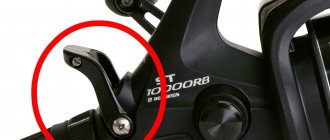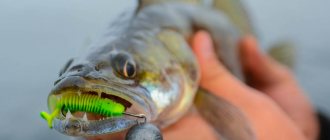Recently, homemade foam rubber fish have gained enormous popularity, because predators bite on them no less willingly than on live bait. And sometimes, even much better. Sergei Pavlov was the first to make such a bait, and his invention is still in great demand.
You can make foam fish yourself. Any fisherman can do this. The process itself is very simple. Manufacturing does not require either expensive materials or a huge amount of time.
Should I buy a foam fish or make it myself?
Many fishermen prefer to buy everything they need for fishing in a store so as not to waste time and effort on manufacturing.
If the question is whether to buy or make it yourself from foam rubber, then the answer is clear - do it yourself. After all, such bait does not last long. They quickly become unable to work, getting caught on a piece of snags, or dying from the teeth of a predator. And therefore, even for one fishing trip you will need several pieces.
You have to buy them often, although their price is small, it is still quite expensive. Therefore, it is much easier and cheaper to do it yourself.
Moreover, it can be made to any size and painted the way you want, thereby increasing the chance of being caught. After all, you can create the perfect bait that will be ideally suited to fishing conditions and will be effective for hunting certain fish.
How to make a nozzle
Before you start making a foam fish for pike with your own hands, you need to prepare the necessary material:
- Foam rubber. You can take a simple dishwashing sponge.
- Stationery knife.
- Glue. It is advisable to buy one that will not damage the attachments.
- Hook.
- Jig head or sinker.
Making bait is intuitive. You can make a homemade product in a couple of minutes. First you need to cut out the shape of a fish with or without a tail from foam rubber. Then, using a knife or blade, you need to make the bait whiter and more natural, similar to a fish.
The bait is made from available materials
By the way, the shape of the fish does not affect the choice of hook in any way. Further, if white material was used, then it can be painted in the desired color. But it’s better to take the easy route and cut out the bait of the desired color. Lastly, we attach the hooks and jig heads.
Manufacturing process of different types
There are a huge number of such baits. They all have different designs, shapes, sizes, and are equipped with different hooks. But, despite all the diversity, they are made in very similar ways.
Foam fish with a double
You can make it from a regular dishwashing sponge. In addition, such washcloths will produce fish of different colors, which will make such bait much more effective. From the very beginning, you need to cut out a suitable model using ordinary scissors.
And in order to equip it with a double, you will need the following materials and tools:
- Double
- Blade
- Glue
- Artificial fish
- Pliers
Equipment stages:
- From the beginning, you need to modify the doubles a little, you need to bend them a little more so that when they are attached to the fish, they fit snugly against its sides. This will help avoid getting caught on snags, and thereby extend the life of the bait.
- After this, on the sides of the workpiece you need to make a longitudinal cut with a blade into which to insert the double.
- Glue the edges of the foam. To strengthen it, you can wrap the front part of the hooks with threads and glue them with waterproof glue.
Foam fish - non-snappy on the double
After the base is cut out, you need to give it the correct shape. That is, make the head and tail more pronounced. This is very simple to do; use a blade or scissors to cut out the tail fin and the thickening at the top.
It is very advantageous to make a non-clinging one, because it will last much longer, since it will not cling to ledges, snags and branches.
To attach the double you need to do the following:
- Make small cuts on the side of the head, through which you need to push the double so that the base comes out through the middle of the head.
- After this, you need to slightly squeeze the sides of the doubles so that they fit tightly to the body.
- You need to pour a little glue into the cut, and for better fastening you can sew hooks to the body of the fish.
Foam fish equipped with treble hooks
It is better to use such baits in a body of water where there are no snags to catch on. They are much more effective at catching predators that attack the prey from the head. It is very convenient to use tees, because even if the prey is sluggish and does not want to swallow the bait, there is a good chance that it will catch on at least one hook and can be hooked. It is best to equip them with several tees.
The manufacturing process is as follows:
- First you need to connect the tees together with regular wire. But before that, you need to decide on the place where they will be attached.
- If you attach it to the head, it is better to use a tee without an extension. The second one needs to be attached below, near the tail.
- Cut the fish along its entire length, the depth of the cut is approximately half the thickness of the bait.
- Where the tees will be attached, it is necessary to make several small transverse cuts.
- Then insert the hooks into the slits and fill with glue.
Foam fish on an offset hook
These hooks are ideal for equipping lures made from soft materials. They can be used to make twisters or vibrotails. In addition, they are very convenient, because they do not cling to any ledges or stones. For a foam base you need hooks No. 2-3, round.
Fastening process:
- Near the head you need to make a small incision into which to insert the offset hook with the back.
- Pour glue and wait for it to dry.
- After this, make another incision on the back, the hook passes through the abdomen and comes out at the incision site on the back. The sharp end should go straight into the hole.
- Secure everything with glue again.
Foam fish on a single hook
This bait can be made with an open hook, or in a closed version.
Manufacturing stages:
- Take hook No. 17-18, the thickness of the fish should be half the length of the hook.
- You need to fasten it a little obliquely, and additionally secure the blunt part with thread and glue.
- The foam is cut at the top and only the front part is inserted.
- A small incision is made on the back through which the sting is removed.
Foam fish on a jig head
If you don’t have to cast too far, you can make this bait on a jig head. For manufacturing it is necessary to complete the following steps:
- Prepare a jig head with medium size hooks. They must be durable and very sharp.
- A deep cut is made in the fish, the length is the same as the fore-end.
- A hook is inserted into it, next to the weight. And then attach it with glue.
Foam rubber + twister
Often the fish grabs the bait by the tail, and if you equip the back with a twister with a hook, this will significantly increase the chance of catching prey. You need to purchase a tee No. 2-3, a twister and a hook. And also, for fastening you need a small piece of wire.
Stages of work:
- First, the base of the tee is wrapped with wire, and a little is left for fastening.
- The workpiece is cut lengthwise, a tee with wire is inserted and filled with glue.
- When it dries, you need to bend the ends of the wire a little and put on the twister.
- Also, in order for such a bait to sink, you need to attach a small weight.
Foam rubber + twister
A bait fish made from foam rubber and twister is perfect for catching perch. Perch loves to bite the tail and often tears it off.
Since this bait has a small twister with a hook in the tail, perches will no longer spoil your bait with impunity.
Materials:
- Tee No. 2;
- Single hook;
- Section of string No. 2;
- A small twister.
Manufacturing:
- To begin with, we wrap the forend of the tee with string, so that only a small tip remains for subsequent installation of the bait.
- Cut out the fish from foam rubber. What exact shape and size your bait will be is an individual matter, but in this case it should not be very large.
- We glue the tee (already wrapped with string) into foam rubber. We are waiting for the glue to dry.
- We bend the end of the wire, put a single hook on it along with a twister , and then securely curl the end of the string.
In the end, I would like to add that the weight on such a bait should weigh approximately 7-12 g. That is. easy, because perch loves to swim in shallow water bodies.
Benefits of foam fish
This bait has a lot of advantages. The most important ones are:
- Softness. Since it is very soft, when a predator grabs it, it does not become suspicious, because such prey is immediately classified as alive. In addition, thanks to the peculiarity of the foam rubber, during the grip the tip is immediately exposed, and the prey is detected much more efficiently.
- Buoyancy. Such material, immediately after entering the water, becomes vertical, which is very popular with predators and makes the bait more desirable.
- Elasticity. When such material is saturated with water, it can play a very interesting game, attracting more fish.
- Cheapness. Foam rubber is very cheap, which makes it possible to produce simply a huge number of such fish of various sizes and shapes.
How and where to catch?
With the help of such baits you can fish in any body of water and at any depth. When fishing takes place in the spring, it is great to catch pike and pike perch. In the summer they hunt for asp, chub, and perch. But only until the fish runs aground, because it is very difficult to catch fish there with foam rubber.
Autumn is the ideal time for hunting with such baits, because almost all prey goes to the depths. It is especially effective to use them in currents with slow retrieves. For greater effect, you need to play an interesting game to attract more predators. Such a fish can interest even a passive and lazy pike.
Fishing technique
Fishing with foam rubber
, as a rule, one of two transactions is carried out:
There are several rules for choosing a catchable bait:
It can be noted that, as such, there is no foam fish that is the most catchy. You need to make a choice based on the characteristics of the reservoir, as well as the fish living in it.
Foam rubber fish are an old bait that began to be used by seasoned fishermen long before the advent of various silicone twisters and vibrotails. In fact, it was used by the pike-perch fishermen of that time, and such fishing was the prototype of the modern jig.
However, even with the advent of newfangled silicone baits, which completely filled all the counters of fishing outlets, foam fish have not lost their relevance. They continue to bring success to anglers who use them in a variety of situations. In some cases, they catch everyone and show the best results, this is especially evident in the jig direction when hunting for pike perch.
Today, young fishermen are also starting to use foam fish. With experience, every spinning player who preaches jig comes to the understanding that “rubber” alone cannot do it in any conditions. It turns out that there are other catchy baits that you should definitely have in your assortment and use periodically. In addition, you can make a foam fish with your own hands at the fishing site, with some experience, spending about 5-10 minutes.
Foam rubber is a unique material. In the air it is light and soft. It is very easy to handle. Once in the water, it has buoyancy due to the air remaining in the pores. In addition, the bait made from it has extraordinary mobility when retrieved, wagging from side to side, which has a fascinating effect on the fish.
The advantages of foam fish are:
- Easy to make bait from this material. This process requires a minimal set of tools, and little time is spent on it.
- Catchability and versatility. Foam rubber fish show excellent results in currents and in closed reservoirs. They work well in shallow water and deep holes. They catch pike perch, perch, catfish, pike, etc.
- Positive buoyancy and attractive play. Before the next cast, it is enough to squeeze the bait with your hand so that it starts working again, as after the first cast into the water.
- Decent flight characteristics. A foam fish with an eared sinker is one of the longest-range baits, since it has a streamlined shape and does not sail when casting.
- Durability and survivability of the material. Foam rubber has a strong structure that is not easy for a predator to tear. The bait often retains its working qualities even after several ardent pike bites.
- Cheapness. The cost of foam fish is several times less than silicone baits.
It has been noticed that foam fish make their best catches in cold water. Experienced fishermen use this bait in early spring before spawning, as well as in late autumn, when stable cool weather sets in. During the warm period, “foam rubber” works, but not so stably. In summer, it is best to use it for fishing for striped robber, equipping it with light eared weights or jig heads.
Reviews from fishermen
User Alexey writes that foam fish work just great. And the most important advantage of using them is that you don’t mind losing them, because you can make more at home. Grade:
User Vladimir writes that foam fish are an excellent way to hunt predators. I often use it for spinning fishing. The result is simply magnificent. Grade:
User Alexander writes that he often makes such baits. Paints it in different colors to make the hunt more fun. The most catchy ones are those with a black head and a red tail. Grade:
User Kostya writes that this is a classic. Inexpensive and quite easy to make, and at the same time a very catchy bait. The scope for creativity is huge; you can make it in any size, color and shape. There are no limits to experiments and imagination. Grade:
A user under the nickname riba4ok writes that this is a good bait, and indeed quite catchy, but under the same conditions a well-chosen vibrotail will catch it. Grade:
A user under the nickname Danissimo writes that he uses them all the time. It takes especially well on pike in autumn and even winter. Just an incredible bite with them, you practically don’t even need to play, the fish pounces on its own. And if you paint it, then there will be no end to the production. Grade:
User Andrey writes that this bait is the most effective for catching pike perch. Moreover, it is simple and cheap to make, and the production is impressive. Grade:
Foam fish are incredibly popular for hunting predators. Many fishermen make them at home in huge quantities of different shapes, colors and with different equipment. All this allows you to choose the ideal bait for fishing in certain conditions.
DIY making
Preparation of materials
In order to find out
How to make a foam fish yourself, first of all you need to prepare all the tools and materials that you will need for this:
Manufacturing process
After all the materials and tools are prepared, you can begin to make a step-by-step foam fish with your own hands.
Step 1. Drawing the outline. You need to take a sheet of foam rubber, the thickness of which should not exceed 1.5 cm, and draw the outline of the fry on it.
Step 2. Cutting out the workpiece. After the outline of the bait is applied to a sheet of foam rubber, it should be cut out and given the shape of a fish using a razor blade. Everything should be done carefully and slowly, since one wrong movement can ruin the entire workpiece. Some anglers make fins when cutting, which is quite difficult
, however, this gives the attachment greater realism.
Step 3. Processing. When the bait is completely cut, use a razor blade to cut off all sharp corners and edges so that the bait has a rounded shape. Quite interesting is the fact that fish bite more actively on “wrong” baits with sharp edges. Professional fishermen believe
that this happens because the predator believes that the fish that the bait is imitating is injured.
Step 4. Painting. The main thing is that when painting you use waterproof paint, since if you use any other type of foam fish, it will quickly lose its color and become less catchable. It is better to paint the bait with several bright colors at once, for example, yellow and green. For greater realism, you can use a waterproof marker to draw eyes on the bait.
Step 5. Equipping with hooks. After the workpiece has completely dried from the paint, using a blade, you need to make a longitudinal cut on it, where the hooks with the frame are inserted. Stainless steel wire is ideal as a frame. After the frame is inserted, the hole is sealed with waterproof glue. As a rule, the foam nozzle is equipped with two doubles.











